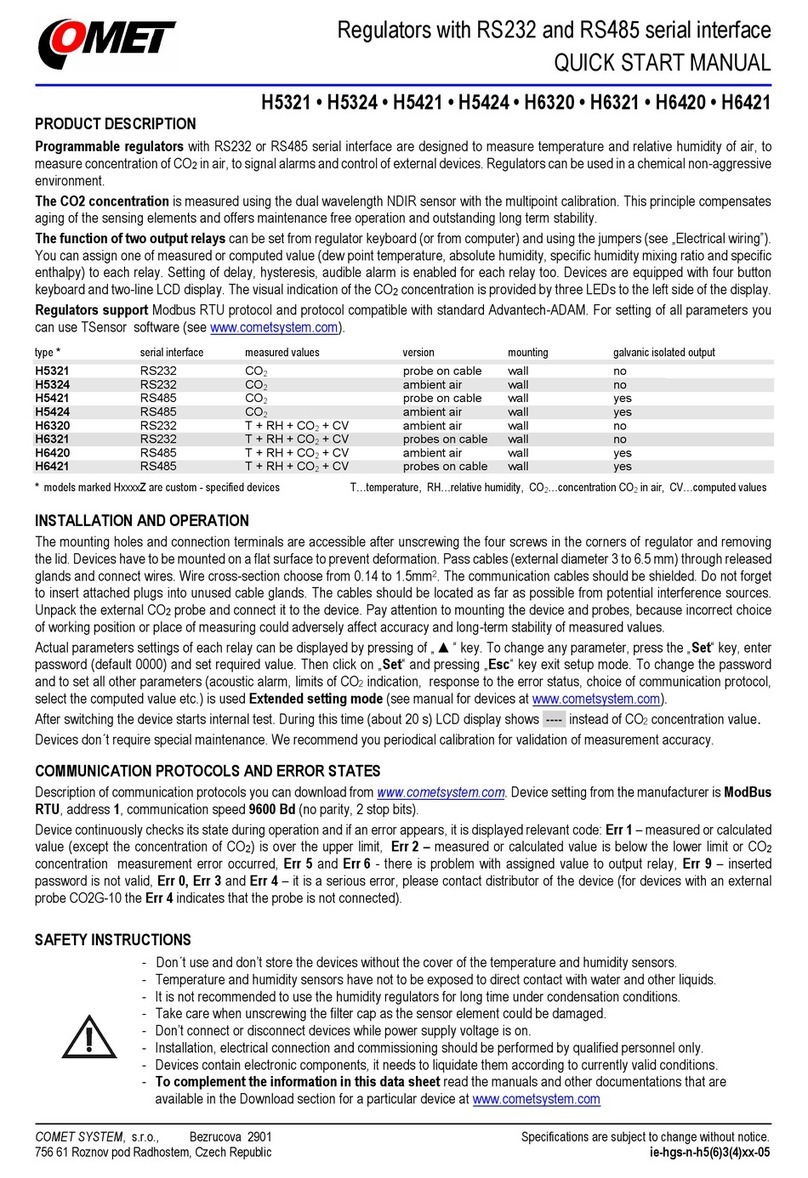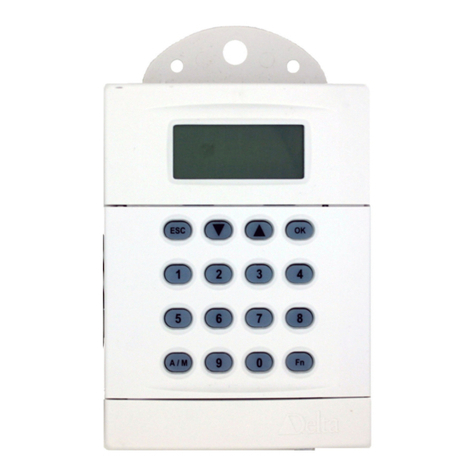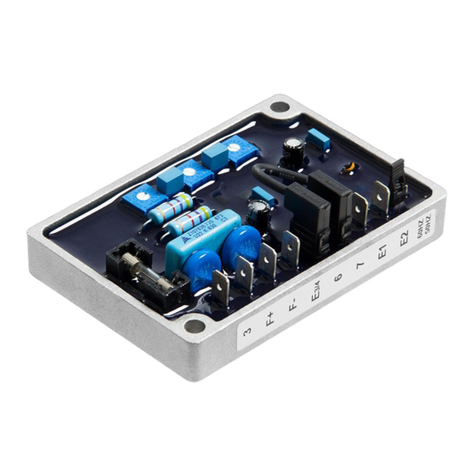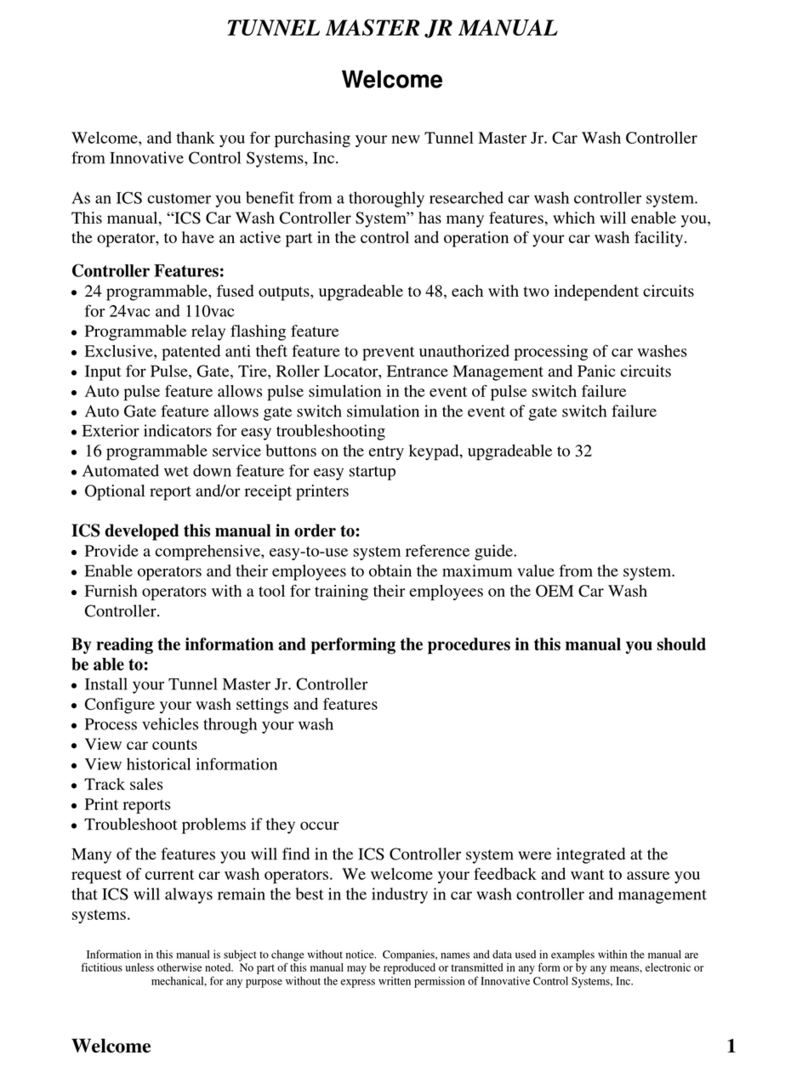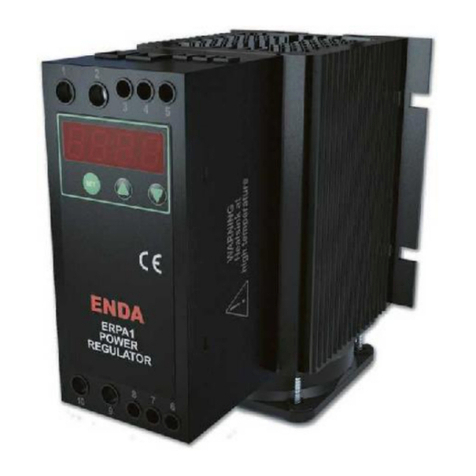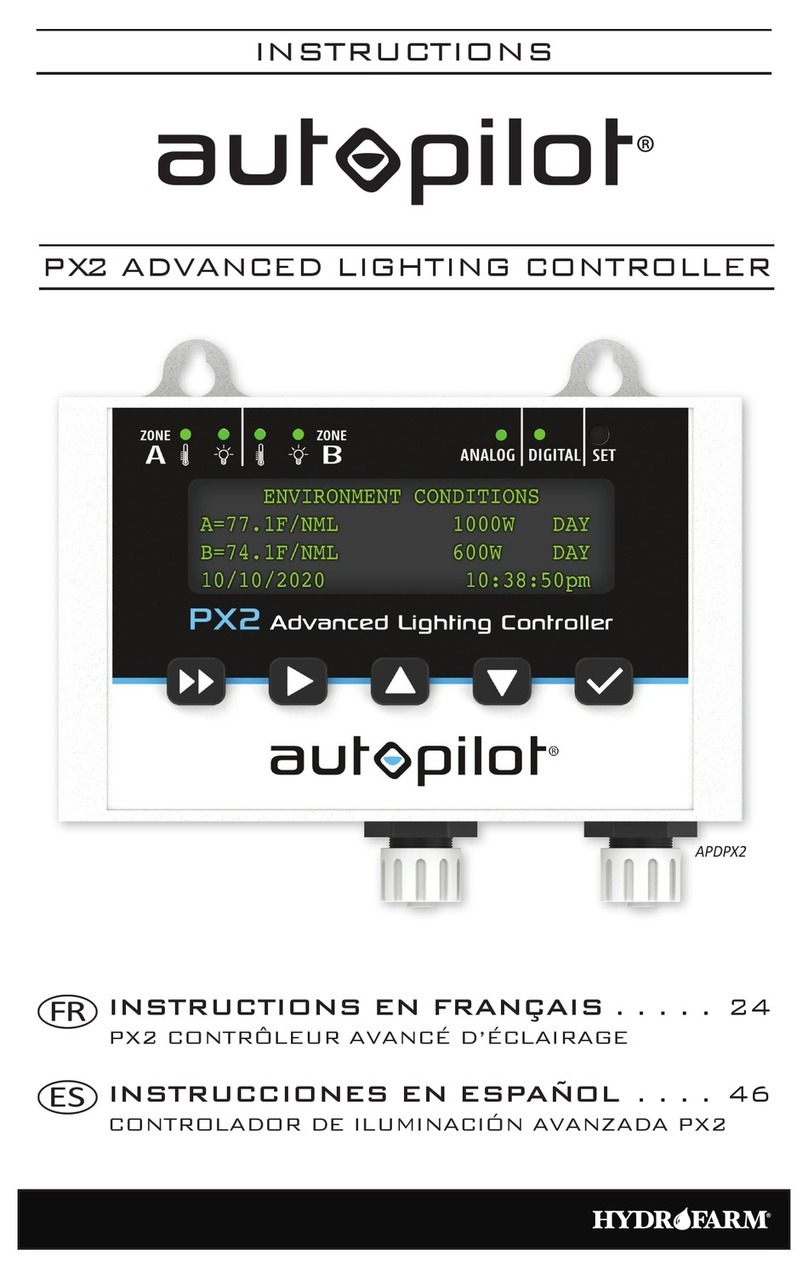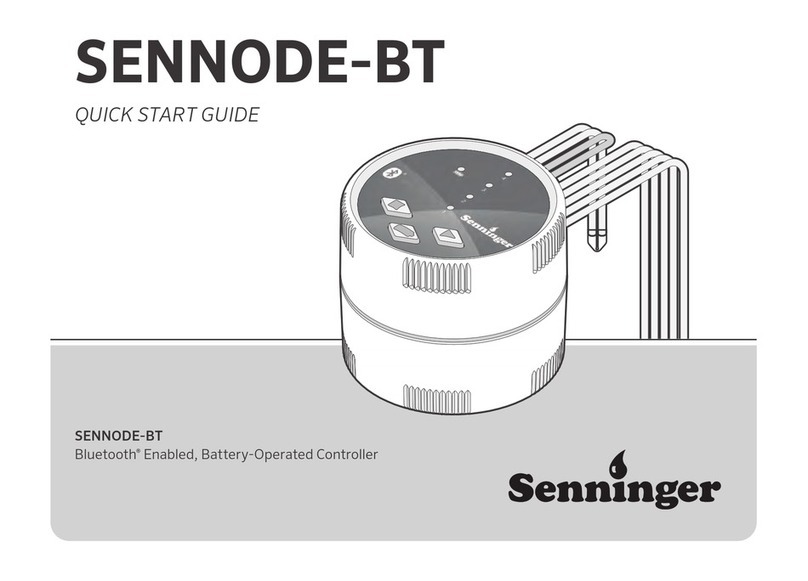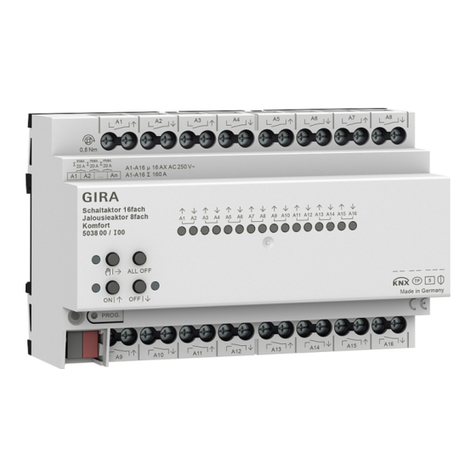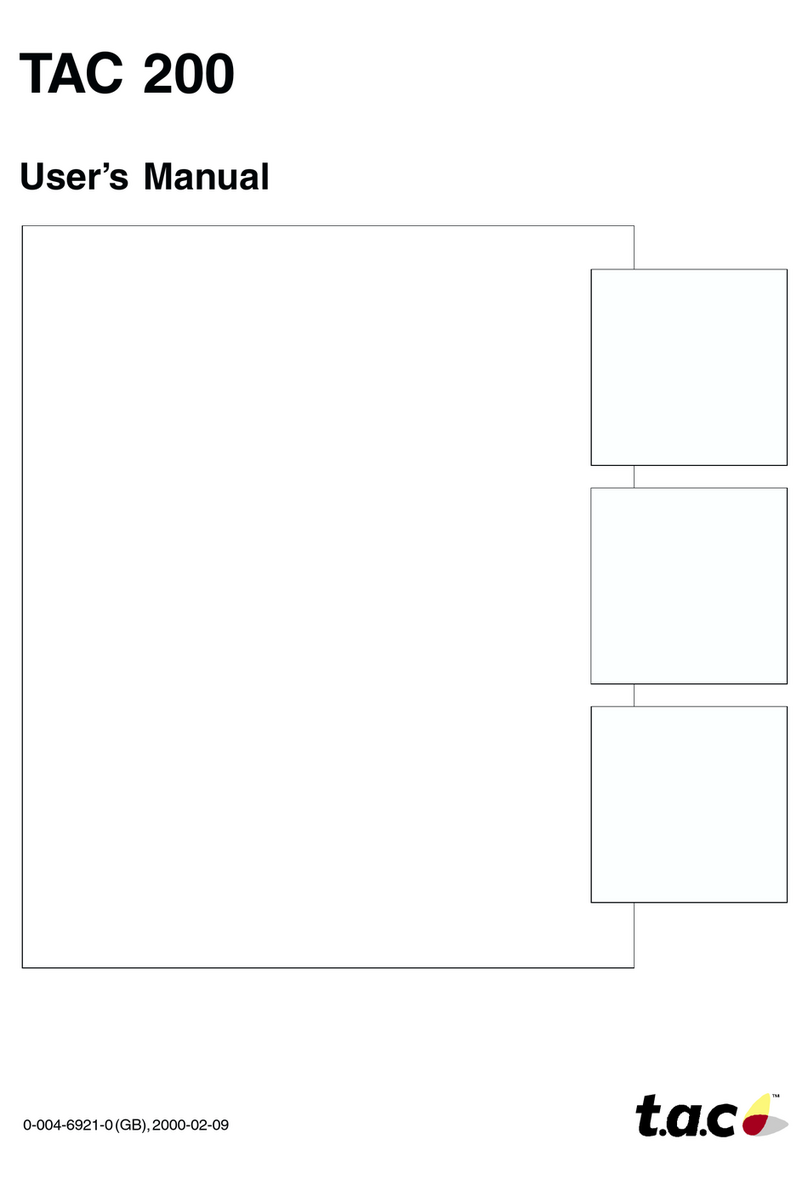ATWELL VG OSG Specification sheet

Serving the lift industry since 1996
Operation and Installation Manual
Serving the lift industry since 1996
To find out more, visit our website
www.atwellinternational.com
or call us on
+44 (0) 1905 641 881
Other Products available at Atwell International
VG Products • ELSCO Roller Shoes • Henning Load
Weighing Equipment • SASSI Machines • Bedplates • Machine Guarding
• Divertors • Overspeed Governors • Tension Weights
Sliding Guide Shoes • Guide Rails • Buffers • Compensation Chains
Atwell International Ltd
Ball Mill Top Business Park
Hallow Worcester WR2 6PD
United Kingdom
Telephone +44 (0)1905 641881
Copyright© Atwell International Limited. All rights reserved.
VG OSG
Operation and Installation Manual
Version 3.0
VG OSG
Operation and Installation Manual
Version 3.0

2Atwell International Limited
Contents Overview ...................................................................................................................4
Safety Notes .............................................................................................................5
Owners obligations ..................................................................................................6
Specification .............................................................................................................7
General Description ......................................................................................7
Brake Mechanism .........................................................................................7
Governor Features ........................................................................................8
Governor Functions ......................................................................................9
Governor Pull-Through Forces ..................................................................10
VG OSG Control Box (VGOSG-CB01)...........................................................10
Signals .........................................................................................................11
Handling, Transport and Storage ................................................................11
Components Supplied ................................................................................12
Optional Installation Pack ...........................................................................12
VG Test Facility.............................................................................................12
RIG Instrumentation ....................................................................................13
RIG Operation ..............................................................................................14
Analysis Of Results......................................................................................15
CE Plate .......................................................................................................16
Installation ...................................................................................................16
General Advice ............................................................................................16
The Control Box VGOSG-CB01A .................................................................16
Wiring ..........................................................................................................17
Wiring Diagram............................................................................................20

VG OSG Version 3 3
Contents Connection Overview .................................................................................21
Door Contact Wiring Options (12v Circuit) .................................................22
Mechanical Installation ...............................................................................23
VG OSG Dimensions....................................................................................24
VG OSG Operational Flowchart ..................................................................25
Normal Operation .......................................................................................26
Resetting The System..................................................................................26
By-Passing The System ...............................................................................27
Test Deployment Of The VG OSG................................................................27
Instructions For Rescue Operations/Hand Winding ..................................28
Regular Maintenance.............................................................................................29
Maintenance Instructions...........................................................................30
1. Controller (VGOSG-CB01A) .....................................................................30
2. Governor (VG OSG)..................................................................................30
3. Operational Checks.................................................................................30
Definitions....................................................................................................31

4Atwell International Limited
The VG Overspeed Governor (VG OSG) is designed to be installed with new
lifts and retro fitted to existing passenger and goods lifts and when used in
conjunction with other VG Safety products such as the VG Safety Gear and or the
VG Rope Brake will provide a complete solution to the requirements of EN81-
20/50:2014. It can also be used with other “CE” marked safety products, but the
responsibility lies with the lift designer to ensure correct operation.
The VG OSG connects to the main lift control panel via its own specific control
box (VG OSG – CB01). From here it can receive power and signals to tell if the lift
doors are open, the state of the main motor contactor and the condition of the
main safety circuit. It also sends signals to the lift, warning the lift controller if the
lift speed reaches 110% above the normal running speed (Alert Signal) and will
operate the “CE” marked braking means in the event of overspeed or unintended
car movement.
The system will always deploy immediately and interrupt the main lift safety
circuit, if overspeed is signalled, unintended car movement away from the
landing with the landing door not in the locked position and the car door not in
the closed position or if the emergency stop button on the front of the control
panel (VGOSG-CB01) is pressed.
The governor incorporates a bi-directional drop-jaw mechanism which is
monitored by state of the art electronic sensors and operates by releasing a
12V dc electro-magnet in the event that either overspeed or unintended car
movement is detected, or the emergency stop button pressed.
When either overspeed or excessive unintended movement is detected the
governor will be activated which in turn will deploy the brakes under its control
and in addition to this an emergency stop signal will be sent to the main lift
control panel, by means of interrupting the main saftey circuit.
There are other functions included as standard with the system such as:
indictaion of status to assist with fault finding, remote reset and the ability to
bypass the Unintended Movement monitoring but still maintaining overspeed
detection. Other functions allow for a Test speed of 0.63m/s mechanical trip and
0.63m/s electrical trip (or trip speed if this is lower) to be selected and a hand-
winding function which will lower the overspeed trip to 0.3m/s.
Power loss is catered for by the incorporation of an internal battery back-up
system to seamlessly switch from mains power to battery and back again
without the need for manual intervention to reset the VG OSG. But if during the
power loss excessive movement occurs, or that the over speed governor trips,
a full reset will be required but this is done using a key switch mounted on the
front face of the VGOSG – CB01A control box.
If during its normal operation the system develops a fault then an error or alert
signal will be sent requesting the lift stops at the next oor and when the doors
opened the VG OSG will activate until the fault can be rectified by a competent
person.
Overview

VG OSG Version 3 5
Both employers and employees have a duty of care in relation to the health and
safety of people or property which may be affected by their actions, or failure to
act. Therefore, building owners, or those who have responsibility for controlling
buildings are required under the Management of Health and Safety at Work
Regulations to ensure that their premises are safe and free from risk to health so
far as is practicable. This includes access to the plant equipment and articles or
substances used and in this particular respect will be relevant to the Workplace
(Health, Safety and Welfare) Regulations.
Installation, commissioning and maintenance of this system should only be
carried out by authorised persons who have received the necessary instruction,
because it is dangerous for any other persons to attempt to do so.
Any failure to take adequate precautions may render the authorised person guilty
of negligence should an accident occur.
It is essential that a “Competent Person” has installed and commissioned this
system. It is also essential that a “Competent Person” maintain this system in a
safe manner and at regular intervals.
The “Competent Person” must have had adequate training in theory and
practice together with experience of the equipment in question; to enable a true
assessment of its condition for continued safe operation.
No alterations, modifications or repairs to this system or its components should
be undertaken without the written consent and advice or instruction of the
supplier Atwell International. Any advice or instructions from the supplier must
be followed; any deviation may risk the safe operation of the lift. Even if consent
is given then all the risks associated with the work will have to be suitably and
sufficiently assessed by the owner before these alterations are implemented.
No replacement parts other than those specified or supplied by the supplier
Atwell International should be used as incompatible parts may risk the safe
operation of the lift. Genuine spares are available within 24 hours at a reasonable
cost. But if spares are needed quicker than exact same or equivalent parts may
be sourced locally once the exact specification of those parts has been obtained
and you have suitably assessed the implications of using non-standard parts.
If there is any doubt then you should render the lift out of service and contact
Atwell International or one of its appointed agents for assistance.
Safety Notes

6Atwell International Limited
The Owner of the Lift or any delegated party shall inform the Maintenance
Company immediately:
a) about any detected abnormal functioning of the installation;
b) before any modification work on the installation;
c) about any modification of any equipment or condition related to the
installation which existed at the time of the original installation;
In the case of suspected or actual dangerous situations, the installation
shall be put out of service immediately.
We strongly advise that you should carry out a Risk Assessment to determine, as
completely as possible, the different intervention procedures of the maintenance
operations and to associate appropriate safety measures with each of these
procedures.
This Warning Label is incorporated into the control box lid graphic to warn you
of Live Electrical Parts, DO NOT REMOVE the lid if you are not a competent
electrician capable of safely assessing the potentially dangerous internal
connections.
Owner Obligations

VG OSG Version 3 7
A modern digital governor and tension weight to complement and integrate with
the VG range of safety gears and the VG rope brake.
The governor incorporates a drop-jaw mechanism which produces the same
operating force in both “up” and “down” directions. This can be varied to suit the
application.
The governor has an integral electric actuator to reset the governor remotely.
The governor can have an independent pulse encoder fitted for integrating with
lift control systems.
The digital control system permits a wide range of speeds to be selected
with a superior accuracy over mechanical systems. The control system has a
programmable feature for monitoring any form of uncontrolled lift movement
Specification
General Descriptions
Please refer to drawing “VG OSG General Overview – fig 8 pg 21” which illustrate
the mechanical assembly and the “Scott – Russell” linkage respectively.
The drop weight CDS1703 is pivoted on one end of links CDS01708 and pivoted
jaw CDS01716 at the other end. One end of short links CDS01707 are pivoted at
the centre of the long links and the other ends are anchored to the side plates of
the governor.
The drop weight is held in the disengaged position by a small dc magnet which
is released when an over-speed is detected. As the weight drops the pivoted
jaw is constrained to move horizontally and trap the governor rope against
spring loaded jaw CDS01713. The weight continues to drop until the long link is
horizontal.
The force generated by the governor is controlled by:-
1) The force exerted by springs in the fixed jaw
2) The profile of the governor jaws
The standard governor has a nominal braking force of 500 Newtons in both “up”
and “down” directions. This is generated by four compression springs CDS01722
and a 50% undercut “U” grooves in the gripping jaws. The braking force can be
increased by inserting two additional springs in the assembly and/or increasing
the width of the groove undercut.
Unlike friction governors, the mass of the tension weight and the governor rope
has no inuence on the braking force. However, the weight requires a positive
lock-down feature to resist a pull in the “up” direction equal to the governor rated
force and be bolted to the pit oor or other steelwork.
The modular tension weight is shown in drawing “VG TW – fig 9 pg 21”. It
consists of a pulley assembly fitted with two sprung ratchets which engage with
a ratchet bar suspended from the tension weight frame. At least one ratchet is
engaged at all times to prevent the pulley from being lifted more than 10 mm.
The tension weight can have additional weights added to the pulley when used
with friction type governors. Other Tension Weights can be used as long as they
are fitted with a suitable lock-down feature.
To reset the governor, the drop weight is raised to its release position by an
electric actuator CDS01740. This is mounted adjacent to the drop weight and
operates against a sprung stop bolted to be drop weight. The linear actuator is
fitted with a potentiometer to verify that it is fully retracted before the governor is
placed back in service.
Brake Mechanism

8Atwell International Limited
The governor has the linear actuator as standard for remote re-setting. This
resets the governor each time power is connected and following actuation of
the governor by either an over-speed or by the UMD control. The actuator is
powered by 12 volts dc to enable the governor to function under battery back-up.
The governor is to have a plug in facility to interrogate the control system without
the need to gain access to the control box itself. This will be made available only
to restricted personnel for verifying speed settings etc.
The resetting of the governor is to be via a separate control box (VGOSG CB01A)
remote from the governor. This control box is fitted with a battery back-up as
standard.
The main control box on the governor has limited external displays, ie
a) Reset Mode Enabled
b) Set OK
c) Warning / Fault Detected
d) Overspeed Detected
e) Unintended Movement Detected
f) Doors Closed
g) Motor Running
The status of the governor is verified by micro-switches actuated by the 12
mm rod extending from the drop weight. Switches are provided for both the
“engaged” and “released” conditions. These switches, in conjunction with the
governor control system can be used to relay the state of the governor to the lift
control system.
The governor can be fitted with a “safety” switch in accordance with EN81 as
an optional extra. This will be actuated by the handle on the reverse side of the
governor.
Governor Features

VG OSG Version 3 9
Governor Functions The governor has two distinct control functions:-
a) To monitor lift for over-speed
b) To monitor any form of unintended movement when the lift is stationary.
This can be monitored for either speed or displacement.
Lift Over-speed:
The lift speed is monitored at all times. The governor has two speed settings:-
1. A signal alert is sent to the lift controller when the speed of the lift exceeds
the rated speed of the lift by more than 10%. The lift control system should then
prevent the setting in motion of the machine or initiate immediately its stopping.
2. The governor brake will be deployed if the lift speed exceeds the rated speed
by more than 20%. The maximum permitted velocity before the governor is
tripped, is given in EN81 as 1.25v + 0.25/v. This is considered unnecessarily high
with systems with accurate speed monitoring. However, as this is programmable,
then any figure in increments of 0.05m/s up to the maximum can be selected.
Unintended Movement Detection (UMD):
Lifts shall be provided with a means to stop unintended car movement away
from the landing with the landing door not in the locked position and the car door
not in the closed position, as a result of failure in any single component of the
lift machine or drive system upon which the safe movement of the lift depends,
except failure of the suspension ropes or chains and the traction sheave or drum
or sprockets of the machine
The UMD will be triggered when one of the following conditions is exceeded:-
1. The lift moves a pre-set maximum distance from the landing. This can be
varied from 24mm to 360 mm.
2. The lift velocity exceeds the maximum rated speed of the lift
3. The lift velocity exceeds a pre-set lower value than the rated lift speed
The VG over-speed governor has integrated the established and certified circuitry
of the unintended movement detection system used with the VG rope brake.
However, the circuitry has been upgraded to comply with the requirements of
annex F of EN81-20/50:2014.

10 Atwell International Limited
Governor Pull-Through
Forces
The governor has a brake actuated by the falling of the “drop weight”. This traps
the governor rope between a pivoted jaw and a spring loaded jaw. Both jaws are
case hardened and have undercut semi-circular groove profiles.
The brake incorporates the same underlying technology used in the VG rope
brake where braking force is dependent on the spring force and groove profile.
The standard governor has a minimum braking force of 500 Newton’s in both
directions based on 4 compression springs and a 50% undercut groove.
The braking force can be increased to over a 1000 Newton’s by fitting 6 springs
and increasing the undercut to 75%. As part of the documentation of the
governor, the actual pull through force will be recorded on the CE plate.
VG OSG Control Box
(VGOSG-CB01A)
The controller will be enclosed in a plastic enclosure suitably rated for the lift
control room. It is approximately 289mm long x 239mm tall x 108mm deep.
With the exception of replacing the battery every 3 years it does not require any
maintenance, other than periodical testing and inspection in accordance with
your site risk assessment and the lift regulations.
It contains safety relays, visual and audible indicators, wiring connectors,
emergency stop button, key switches, battery, power supply and fuses.
The VGOSG-CB01 controller has been designed and constructed to comply
with all current CE requirements, i.e. EMC, Low Voltage, RoHS, WEEE and more
specifically to meet the requirements of EN 81-1:1998+A3:2009.
Indication of the system status will be provided by LED’s i.e.
a) Reset Mode Enabled,
c) Set OK
d) Warning / Fault Detected
e) Overspeed Detected
f) Unintended Movement Detected
g) Doors Closed
h) Motor Running
The VGOSG-CB01 has two switches and one push button, one is an emergency
stop button, when this is pressed the VG OSG will be immediately deployed. The
key switches require a key to operate them; this is because regulations require a
competent person to reset the VG OSG in the event of a deployment or the need
to carry out hand winding operations. So to prevent any unauthorised tampering
or resetting or bypassing of the system a key is used. We supply 2 sets of keys
per system (4 keys in total); these should only be made available to competent
persons. One key switch will allow the remote reset of the VG OSG (any VG
rope brakes or VG safety gears are set in the normal way) and also to bypass
the unintended movement detection during maintenance. Please note that
overspeed detection will always remain in operation.
An audible alarm is included within the VGOSG-CB01 controller; this will beep
when in the bypass mode.
The other key switch is to activate either the Test or Hand-winding functions.

VG OSG Version 3 11
Signals Controller input power supply will be 230V or 110V AC 50/60Hz, it has an internal
12v DC control voltage, power supply and battery backup.
The system requires the following signals and connection to the external
contacts to enable it to operate.
1. Live Supply
2. Neutral Supply
3. Earth
4. A Door Open / Closed Input signal
5. A Main Motor Contactor Open / Closed Signal
6. Main Lift Safety Circuit Output Signal
7. Main Lift Alert/Warning Output Signal
8. Optional hand winding contact
9. Optional test control contact
Handling, Transport
And Storage
The components of this system have been carefully packaged for shipping,
including strapping and strong tape. If you use a knife to cut open the boxes,
please be very careful to ensure that you only cut through the tape and straps
and not through the cardboard potentially damaging the components inside.
Please inspect the components of this system thoroughly prior to attempting to
install it. If any of the components has been or suspected to have been damaged
or exposed to moisture, they should not be used. Please return them to Atwell
International for examination and re-test.
The VG OSG and the VGOSG-CB01 should never be lifted or carried by their
cables. They should never be allowed to get wet or exposed to moisture.

12 Atwell International Limited
An installation pack is also available from Atwell International but is not included
as standard. This pack includes:
• 10mtrs of 18 core CY/SY Cable
• 5mtrs of 8 core screen cable
• 5mtrs of 3 core Tri-Rated 1.5mm² cable
• 15mtrs of 20mm plastic exible conduit
• 4x 20mm Conduit Glands
• 10 x 20mm conduit clips
• 1 x MCB
• 2 x Slave Relays
• 4 x M8 Bolts
Optional Installation Pack
To assess the integration of the “detection” means (the VG Governor) with
prevention means (either the VG safety gears or the VG rope brake) a full-scale
test rig has been designed and manufactured. This is illustrated in figure one.
The rig simulates 630 kg lift with an empty lift car weighing 540 kg and a
counterweight weighing 850 kg. A pair of VG-4 safety gears is mounted on top of
the counterweight and an inverted VG rope brake mounted to brake the lift car in
the up direction. The overall travel has been restricted to 900 mm to comply with
the requirements of EN81.
N.B. While the test rig is based on a small capacity lift, the dynamic
profile is representative of all “one to one” roped traction lifts. On
bigger lifts, with greater OBL’s and well masses, the general dynamic
profile will be similar to that produced by the test rig. Larger lifts would,
of course, be fitted with appropriately rated VG rope brakes and VG
safety gears.
The rig is controlled by a single VG governor and tension weight. The rig can be
set to trigger either:-
a) The governor plus VG safety gear or
b) The governor plus VG rope brake.
VG Test Facility
Please check that the following parts have been supplied and received in good
order prior to attempting to install the system.
• Governor (VG OSG).
• Control Box (VGOSG-CB01A).
• Control Box xings (4 x wall plugs and 4 x screws).
• Spare fuses. (3 types 1 of each)
• Manual & Documentation pack.
• 4 keys.
Components Supplied

VG OSG Version 3 13
The test rig is fitted with a pulse encoder mounted from “the lift car” and running
on the guide rails. The encoder and a 16 channel data logger is then connected
to a computer to measure and record the information required in section F.8.3 of
EN81:-
1) The individual response times of different phases of the OSG and UCM
detection system.
2) The overall time of the test
3) The average acceleration
4) The velocity increase after the governor has been tripped
5) The time to decelerate.
In addition, absolute measurements of the total travel and the slide distance
through the rope brake will be taken. These results are then used to derive the
salient points indicated in Figure F.2 of the code. A dynamic profile of a typical
test is illustrated in Figure 2.
RIG Instrumentation
Figure 2

14 Atwell International Limited
The rig is initiated by the release of an electromagnet under the smallest mass
which represents the “empty lift car”. The masses will then accelerate with a
“natural” value expressed by the equation:-
Acceleration = gn(mass1-mass2)/(masss1 + mass2+mass3).................1
Where gn = gravitational constant = 9.81 m/sec2
mass1 = heaviest mass (either full car or counterweight with empty car)
mass2 = lightest mass
mass3 = equivalent mass of diverter pulleys, traction pulley, ropes etc
NB The highest acceleration on any lift system will occur with an empty
car and is the reason why the rig has been prepared in this format.
Based on the above equation, the “counterweight mass” will descend
at around 1.8 m/sec2.
The rig is fitted with a VG rope brake in an “inverted” configuration as this is
considered to be the worst case. The rope brake has been configured using the
application programme which forms part of its CE documentation. The brake can
be made inoperative if testing of the safety gear and governor is required.
The rig has a VG-4 safety gear mounted on top of the heaviest mass which
represents the “counterweight”. This is actuated by the OSG positioned between
the two masses. When testing the VG rope brake, the governor drop weight is
prevented from fully releasing.
The dynamic profile of the test rig has been appended to the VG rope brake
application programme. A printout of the programme is appended for reference
purposes. This amended programme will be used for all future applications using
the overspeed governor.
The individually measured response times, as required by section F.8.3, are used
to calculate the theoretical dynamic profile of the rig and then compared with
the actual recorded values. This will enable the effect of any changes in the
individual response times to be assessed accurately.
RIG Operation
Figure 3

VG OSG Version 3 15
The dynamic profile of the test rig has been appended to the VG rope brake
application programme. A printout of the programme is appended for reference
purposes. This amended programme will be used for all future applications using
the overspeed governor.
The individually measured response times, as required by section F.8.3, are used
to calculate the theoretical dynamic profile of the rig and then compared with
the actual recorded values. This will enable the effect of any changes in the
individual response times to be assessed accurately.
Analysis Of Results
CE Plate
Each VG OSG has a unique serial number
Lift Running Speed
Trip speed of the VG OSG 120% > than
Nominal Speed
Warning speed 110% > than the nominal
speed
Distance that the Unintended movement
has been set at.
The force the VG OSG will generate in
both directions
Atwell unique job file number
Figure 4
Figure 3

16 Atwell International Limited
Installation
The area that this unit is intended to be fitted should comply with the lift room
regulations so that its installation, operation and maintenance is carried out in a
risk free environment.
Specific hazards arise for inadequate lighting, untidy work area, trip hazards and
poor access.
General Advice
It is recommended that the Control box is ideally mounted at approximately
1.5 metres high on to a solid wall adjacent to the main lift control panel.
Consideration should be given to access for operation and maintenance of the
control box as well as ease of cable runs.
The enclosure weighs approximately 5 kg, it is supplied with 4 x M4 screws and
rawl plugs to secure this control box to the wall.
The Control Box
VGOSG-CB01
Figure 5

VG OSG Version 3 17
Once the control box is in place, cable runs can commence. See Drg. Circuit Diagram
Overview (sheet 1) for help to plan the cable runs.
We would strongly suggest that the power is fed from the main lift panel
protected by a circuit breaker Type C rated at 4 Amps.
The cable run should be as short as possible. If the length does not exceed 2metres
the size should be at least 1.5mm
2
. Stranded tri-rated PVC insulated. It should also
comply with local regulations.
The control box base will need holes drilling in either the side or bottom face to
allow for cable entry and it is recommended that Conduit Glands are used. Care
should be taken when deciding on the cable entry points to avoid the internal
battery and power supply unit both of which are mounted in the base.
During wiring great care must be taken to ensure that there is no risk of short
circuits from stray strands, cross connection, loose terminals or strain on cable
joins. All terminations should be made using boot lace ferrules or similar and each
wire appropriately identified with its corresponding wire number at each end of the
cable. Wiring of power and internal main lift connections must be carried out by a
competent electrician, and checked prior to applying power.
SAFETY NOTE:
Once connected to the main lift control panel there will be
potentially live connections within the VGOSG-CB01 enclosure even when the fuses
for the enclosure have been withdrawn. Within the VGOSG-CB01 enclosure the
internal connecting cables are coloured red (input wiring from the main controller
may be different colour) and warning symbols are displayed, this is so that you can
easily identify them as potentially live, check them and beware of them.
Wiring
Figure 6

18 Atwell International Limited
AtwellInternationalLtdPage18
Makesurepowerisdisconnectedpriortoattemptingtocheckorreplacefuses.Asthereare
liveterminalsconnectedthroughtotheendofthefusesoifyoutouchthefuseitcouldbe
Live!
Pleasecheckratingagainstlabelsofeachfuse.
F1=InternalPowerSupply 1.25Amps
F2= Controlvoltage 2.5Amps
F3=3.15A
Thefusesweuseare:
1.25A2.5A3.15A
BrakingCapacity35A@250Vac35A@250Vac35A@250Vac
Dia(mm)555
FuseTechnologyF;LBCF;LBCF;LBC
Length(mm)202020
VoltageRating250Vac250Vac250Vac
RSPartNo.541‐3079541‐4397541‐4426
Man.PartNo.021702.MXP02171.25MXP02173.15MXP
Note: The battery is not connected during shipping. The competent electrician must
only connect the battery after testing the wiring and immediately prior to switching
on the power for the first time.
Make sure power is disconnected prior to attempting to check or replace fuses. As
there are live terminals connected through to the end of the fuse so if you touch the
fuse it could be Live!
Please check rating against labels of each fuse.
a. F1 (FS201) = Battery 1.25Amps
b. F2 (FS202) = 12v Internal Power Supply Unit 2.5Amps
c. F3 (FS203) = 12v Relays / 12v Supply to VG OSG / 12v Output 2.5Amps
d. F4 (FS204) = Door / Motor Contacts 3.15Amps
The fuses we use are:

VG OSG Version 3 19
Connections to the Main Lift Control Panel must be carried out carefully to ensure
that the correct function of the signals is produced.
The control box input signals are 12V DC 100mA they require a dry / volt free relay
contact normally open and energised when the Car and Landing doors are closed.
The operation of these switches is essential to enable the VG OSG to operate safely,
i.e. if a cable is broken or the lift over speeds the VG OSG will be FAIL SAFE. i.e. any
problems, the VG OSG will activate.
The connection from the Main Lift Panel such as Alert signal and emergency stop
must be 230 Volts maximum and must not exceed 5 amps. The control box provides
dry / volt free relay contacts for your signals.
Please also see electrical drawings supplied with this manual for further information.
SAFETY NOTE:
DO NOT TAMPER WITH THE CONTROL BOX
If it does not allow the VG OSG to reset then there is still a problem with the lift!
Rectify the problem and the controller will allow a reset.
Do not leave the lift to run in engineer “bypass mode”, this is purely a function
to allow you to carry out maintenance on the lift without triggering uncontrolled
movement. You will have circumvented part of the safety circuit.

20 Atwell International Limited
Wiring Diagram
CIRCUIT DIAGRAM OVERVIEW
VG OSG
DRAW N BY CHECKED DATE SCALE SHEET NO.
R.Walker 11.05.2012 Not to scale 1/2
MAIN LIFT
CONTROL PANEL
Optional Equipment
VG Rope Brake 2
VG Rope Brake 1
The VG OSG will always mechanically engage safety gears
but options are available for additional electro mechanical
brakes such as the VG rope brake.
Options available are:
Option 1 = No rope brakes (safety gear activation only)
Option 2 = 1 x Rope Brake Only (single direction braking)
Option 3 = 2 x Rope Brakes (Bi-directional braking)
VG OSG
VG OSG TO CB01 CONNECTIONS
CONNECTION
No.
ANNOTATION
on VG OSG
ANNOTATION
on CB01 DESCRIPTION
1+12V +12V +12V dc Power
2GND GND 0V dc Ground
3RRES RRES Reset Request
4SAFE SAFE Safety out
5BPAS BPAS Bypass Request
6DOOR DOOR Doors Open
7MOT MOT Lift Motor Running
8ALRT ALRT Alert Signal;
9 MAG MAG Magnet Control
10 PWOK PWOK M ains P o wer Ok
11 SSW SSW Set Switch
12 OVR OVR Overspeed Detected
13 UMD UMD UM detected
14 RES RES Reset Enable
15 HW1 TS Test Switch
16 HW2 HW Hand Winding
17 SPIN EM3 Door Unlocking Zone
18 SPOUT +12V 12v DC Supply
19 -28 Optional Rope Brakes
Optional
Additional
safety switch
18 Core CY/SY Cable
0.5mm
2
}
1.5mm
2
VG OSG to Main CP
Cable size = YY 0.5mm
2
Table of contents
Popular Controllers manuals by other brands
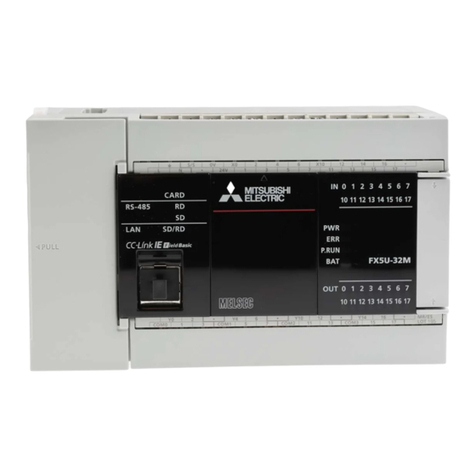
Mitsubishi Electric
Mitsubishi Electric MELSEC iQ-F FX5 user manual

IFM
IFM CabinetLine AE3100 operating instructions
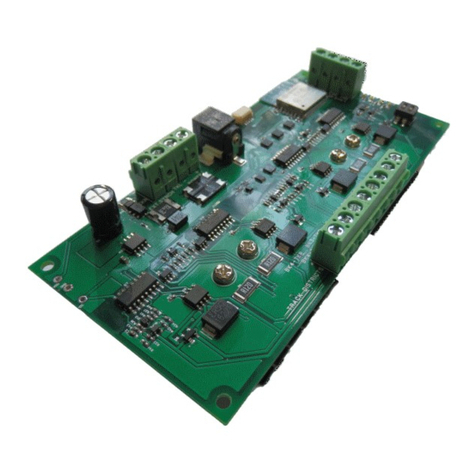
WifiTrax Model Science
WifiTrax Model Science WUFP-47 operating manual
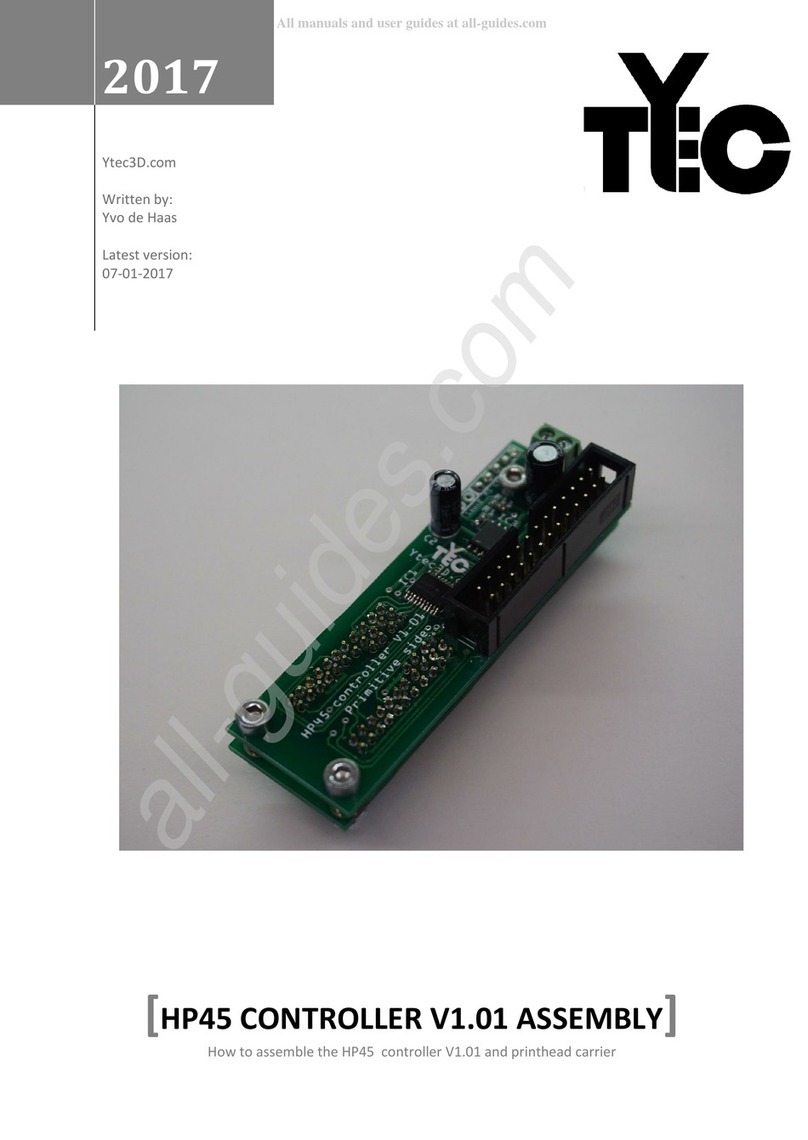
Ytec3D
Ytec3D HP45 Assembly
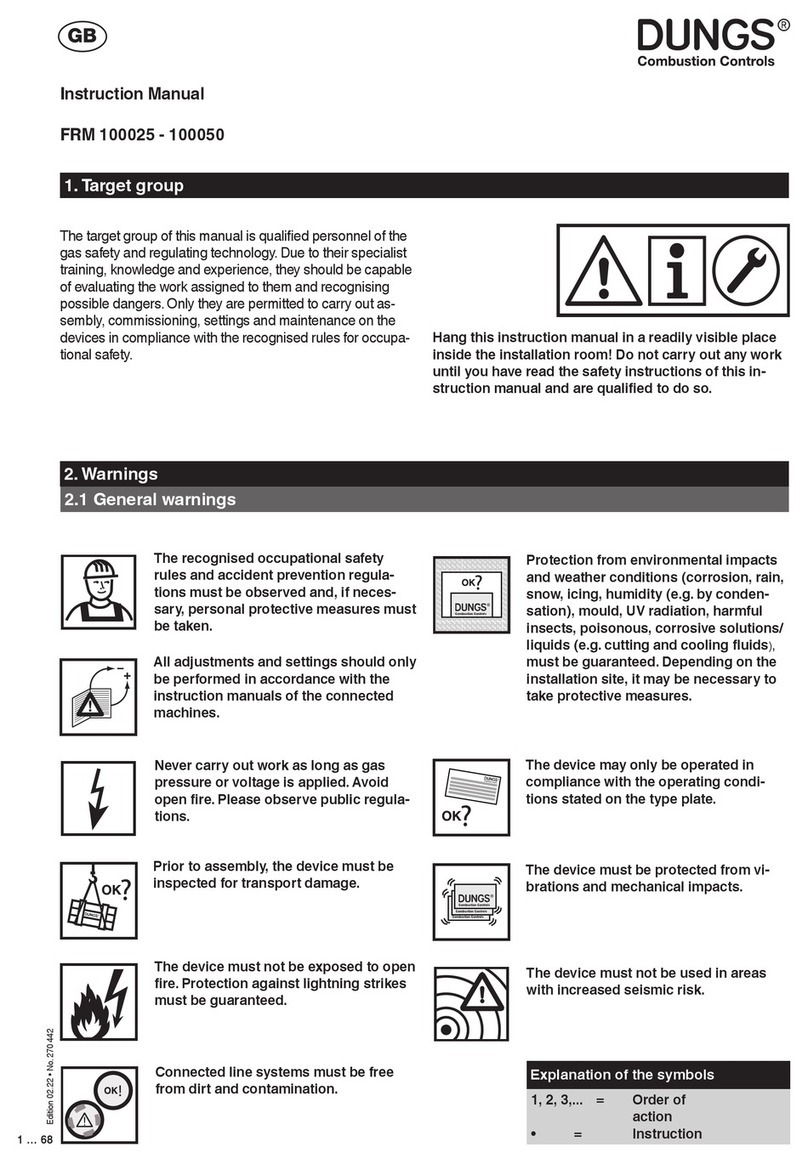
Dungs
Dungs FRM 100025 ND instruction manual

Mitsubishi Electric
Mitsubishi Electric MELSEC-Q/L Programming manual
